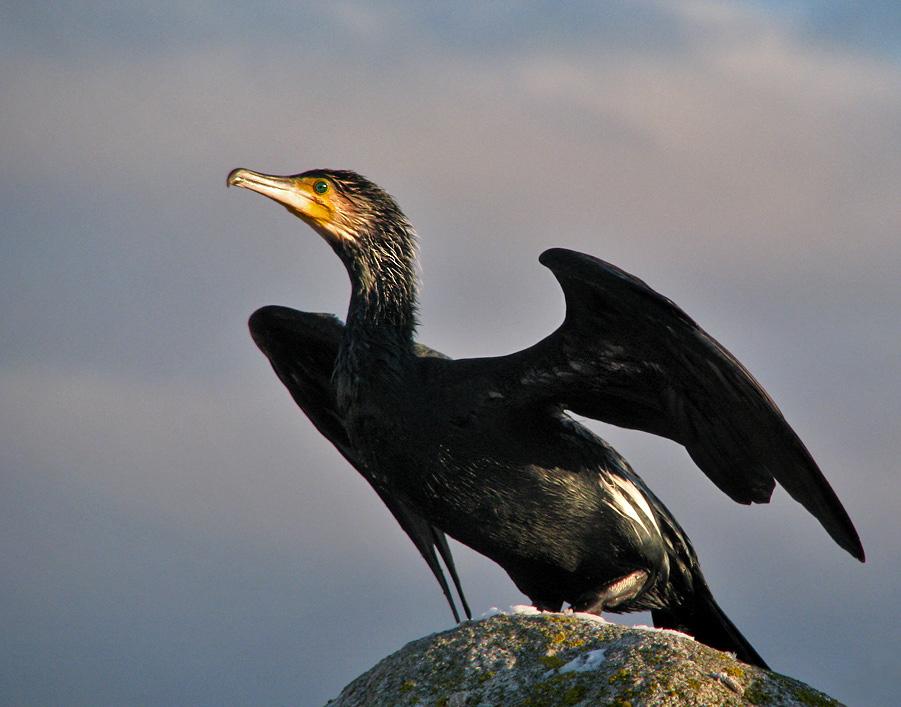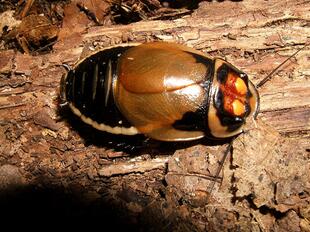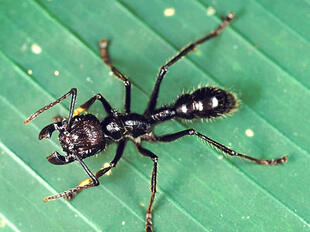
Great cormorant,or Great black cormorant(Phalacrocorax carbo)
Phylum —chordata
Class — aves
Order — suliformes
Family — phalacrocoracidae
Genus –phalacrocorax
Appearance
The great cormorant is a large black bird, but there is a wide variation in size in the species' wide range. Weight is reported to vary from 1.5 kg (3.3 lb) to 5.3 kg (12 lb). Males are typically larger and heavier than females. Length can vary from 70 to 102 cm (28 to 40 in) and wingspan from 121 to 160 cm (48 to 63 in).
It has a longish tail and yellow throat-patch. Adults have white patches on the thighs and on the throat in the breeding season.
Habitat
Great cormorants are one of the most widespread of cormorant species, with a cosmopolitan distribution. Great cormorants are found throughout Europe, Asia, Africa, Australia, and in northeastern coastal North America.
Behavior
These birds are frequently sighted swimming along the surface of the water, and diving beneath the surface. While underwater, they will swim along with their webbed feet or wings, and search for prey. Alternately, humans also spot these birds resting on rocks, buoys, and other areas close to the water. While resting, they clean their feathers and stretch their wings out in the sun.
Great cormorants are mostly silent, but they make various guttural noises at their breeding colonies.
Diet
Great cormorants eat almost exclusively fish less than 20 cm in length. They occasionally eat larger fish, up to 75 cm long or 1.5 kg. Some crustaceans are also eaten rarely. Fish are taken mostly in shallow water less than 20 m deep, but they hunt throughout the water column, from the surface to the bottom, depending on the prey. They dive in and pursue fish under the water using vision, eating small fish underwater and bringing larger fish to the surface to swallow. Great cormorants may also follow fishing boats, taking fish discards or capturing prey disturbed by the wake of a boat. Great cormorants may forage alone or in flocks, varying regionally and possibly with subspecies.
Great cormorants will drink sea water and can rid themselves of excess salt through their salt glands. Adults bring chicks water when they are heat stressed.
Reproduction
Male great cormorants choose and defend a nesting territory. Pairs are monogamous and pairs may be reunited in subsequent years.
Males use a wing-waving display to attract females to their nest site; they raise their wing-tips up and out, alternately hiding and exposing white patches on their thighs while they do this. Once a pair has been formed, they greet each other with a gargling display. Mated individuals also preen each other, entwine their necks, and performing several other displays in specific contexts.
Great cormorant pairs may return to the same nest site year after year if they were successful breeding at that site before. They nest in large colonies, often with other species, including cormorants, gulls, and kittiwakes.
Colony sizes vary regionally and with subspecies, from a mean of 117 nests to over 9000. The timing of breeding also varies substantially throughout the range of great cormorants.Colonies in warmer areas breed earlier than those in colder areas. In the tropics they may breed year-round or breed in wet seasons.
This cormorant lays a clutch of three to five eggs that measure 63 by 41 millimeters (2.5 by 1.6 in) on average. The eggs are a pale blue or green, and sometimes have a white chalky layer covering them. These eggs are incubated for a period of about 28 to 31 days.
Incaptivity
Cormorants live up to a maximum of about 25 years.
Most cormorants are relatively easy to care for. Any cormorant species should have a water source easily accessible, preferably deep enough to dive and swim. They are quite content with a diet of fish, supplemented by the occasional crustacean or squid.
Cormorants can be kept in the summer on a fenced pond. For the winter, they are moved to a warm pavilion located nearby.
 Russian
Russian
 English
English
























